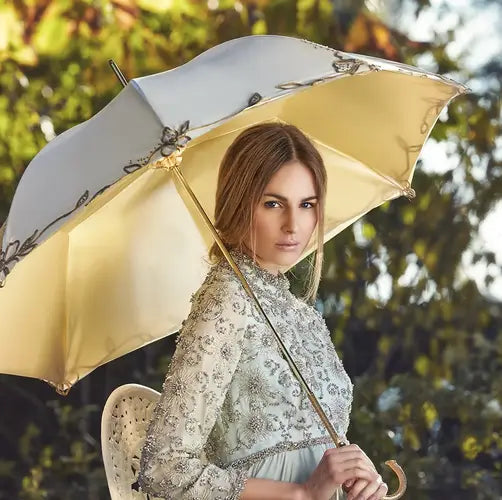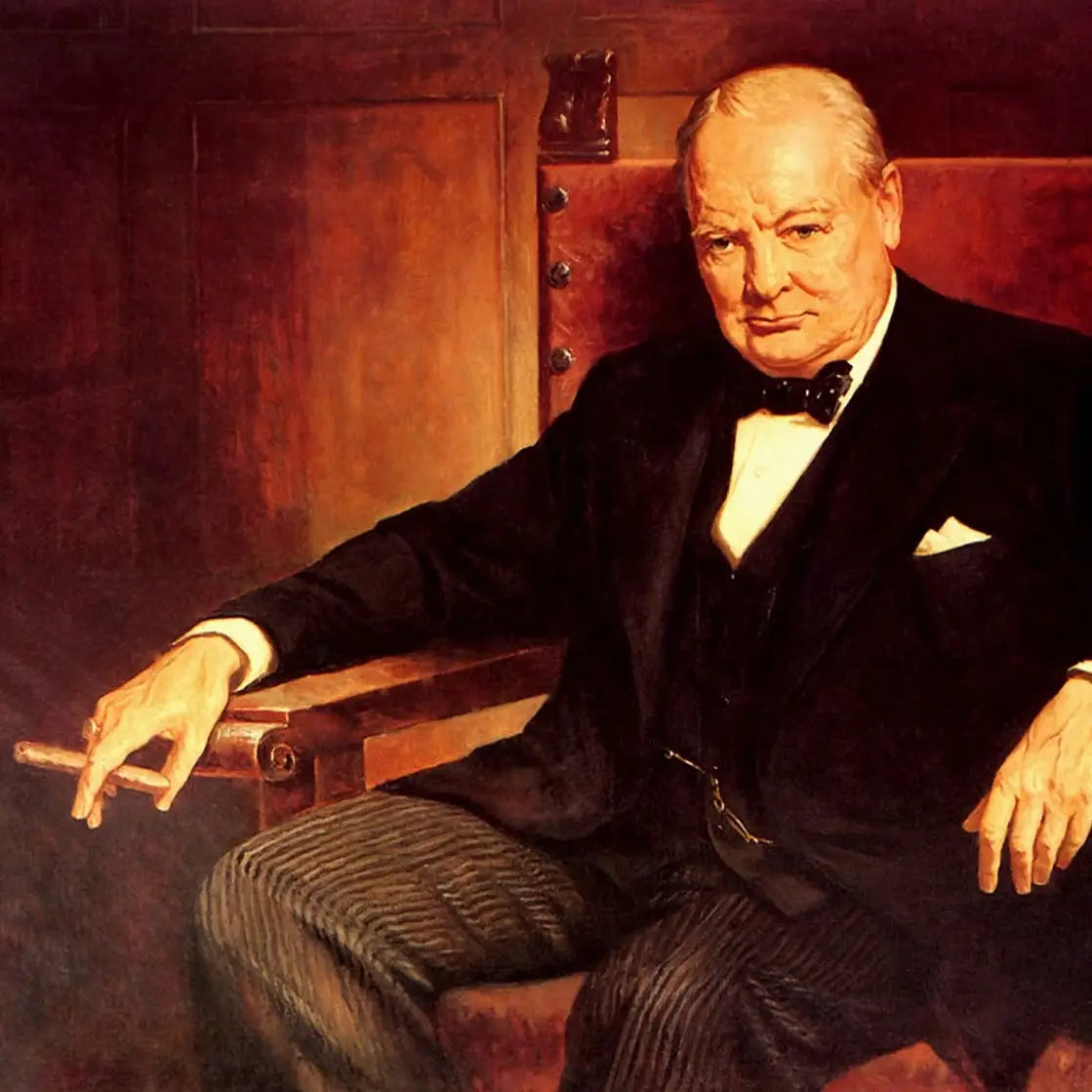
The Remarkable History of the Umbrella
There are objects that, despite their seemingly simple function, possess an unparalleled grandeur. The umbrella is one such object. What began as a symbol of power and status has evolved into an integral part of modern elegance. Far more than a tool to fend off the elements, it is a discreet symbol of refinement, earning its place in the hands of statesmen, poets, and decadent dandies alike.

A Shadow of Power
The origins of the umbrella lie in the distant past, long before rain ever became part of its story. In ancient Egypt, it served as a sunshade, an exclusive privilege of pharaohs and their retinue. The exalted status of this shaded artifact was not only practical—after all, one would hardly wish to burn while performing divine duties—but deeply symbolic. It shielded not just from the sun, but also underscored the elevated position of its bearer.
In China, as early as the 11th century BCE, the concept of the umbrella was further refined. Here, the first waterproof models were developed—a marvel of functionality that, ironically, would come to be admired far beyond Asia. As with all great innovations, it took time for the umbrella to reach Europe. By the 17th century, the Western elite began to take notice, and before long, it graced the salons of Paris and the walking paths of London.
A Gentleman and His Umbrella
In the early days of the umbrella as a rain accessory, it was visionaries—or outliers, depending on your perspective—who dared to adopt it. Jonas Hanway, an English writer and philanthropist, was one such figure. He braved not only London’s relentless rain but also the ridicule of his contemporaries, who dismissed his new accessory as needlessly vain. As is often the case with pioneers, Hanway had the last word: he remained dry while others trudged on, muddied and soaked in their carriages.
A century later, another authority on style emerged—Oscar Wilde, who took nothing more seriously than elegance. He famously referred to the umbrella as “the last bastion of civilization,” likely while shielding himself from both the rain and the less refined opinions of his peers.
Winston Churchill, on the other hand, elevated the umbrella to yet another level. A man unwilling to sacrifice his dignity to a rainstorm, Churchill viewed the umbrella as more than practical. “It is a shield,” he once remarked, “that protects as much against the weather as it does against the disgrace of a drenched man.” The thought gains even more charm when one imagines him strolling through St. James’s Park, cigar in one hand, a perfectly balanced umbrella in the other.
Art in Simplicity
It is tempting to see the umbrella as merely a practical tool, but, as with all great designs, its elegance lies in the details. The perfect balance of a handcrafted umbrella—Italian, naturally—demands the precision of a master craftsman. Opening such an umbrella is not just an act but a ritual: the taut fabric, the polished wooden shaft, the unmistakable feel of an object designed not only to endure but to be admired.
A Tradition of Style
Today, the umbrella is far more than a utility; it is a tribute to a tradition spanning millennia. A well-made umbrella represents a subtle form of luxury—the kind that whispers rather than shouts. For those who understand that true elegance lies in the details, a carefully curated collection of handcrafted Italian umbrellas awaits. Each piece embodies craftsmanship and style, a quiet nod to a past where class was not merely appreciated but assumed.



